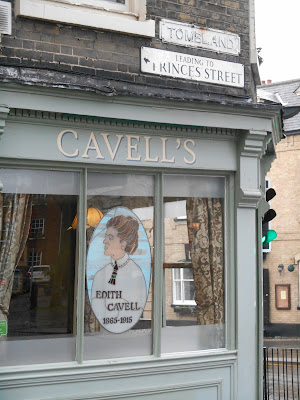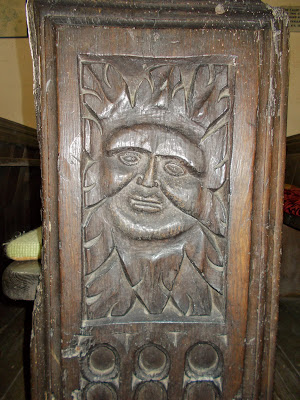Edith Louisa Cavell was born on December 4th 1865 in the village of Swardeston in Norfolk, where her father Frederick was the vicar for 45 years. After being educated at home for several years, Edith boarded at Belgrave House School in Elton Road, Clevedon from 1883-84. She then attended schools in London and Peterborough. In 1889 she became governess to a family in Brussels and she remained in this post for six years. She returned to England in 1895 to nurse her seriously ill father and she then decided to train as a nurse. She trained at the Royal London Hospital and then worked at various hospitals in London and Manchester.
In 1907 Edith was appointed as director of a new nurses’ training school in Brussels, which had just been set up by Dr Antoine De Page. She successfully persuaded potential recruits and members of her committee that nursing was a respectable profession and one which required professional training.
After the German occupation of Belgium in late 1914, Edith became involved in an underground group formed to help British, French, and Belgian soldiers reach the Netherlands, which was a neutral country. The soldiers were sheltered at the Berkendael Institute, which had become a Red Cross hospital. They were provided with money and guides by a Belgian called Philippe Baucq. About 200 men had been helped before Edith and several others were arrested in August 1915 by the Germans.
The group of nine people was brought before a court martial on October 7th, 1915, accused of assisting the enemy and of trying to damage the German war effort. Edith Cavell made a full confession and was sentenced to death on October 9th, along with four others. The remaining four were sentenced to hard labour. Edith Cavell and Philippe Baucq were executed by a firing squad on October 12th 1915 in Brussels, despite the efforts of the American and Spanish ministers to secure a reprieve. Edith’s execution on a charge, which did not include espionage, was considered outrageous and was widely publicised by the Allies.
After the war there was a funeral service for Edith Cavell at Westminster Abbey and on 15th May 1919 her body was reburied on the outside of the south east corner of Norwich Cathedral. She is commemorated on the Swardeston village sign and by a statue in St Martin’s Place in London. There are busts of her at the London Hospital Museum; in Brussels; Melbourne in Australia and Norwich. She also has many streets in the UK and across the world named after her and a bar in Tombland, Norwich There is a blue plaque on 1 Elton Road, Clevedon, commemorating the time she spent at school in Clevedon.
Further Reading:
Edith Cavell: Faith before the Firing Squad: Catherine Butcher. Monarch Books, 2015
Edith Cavell: Nurse, Martyr, Heroine: Diana Souhami. Quercus Publishing, 2015
















